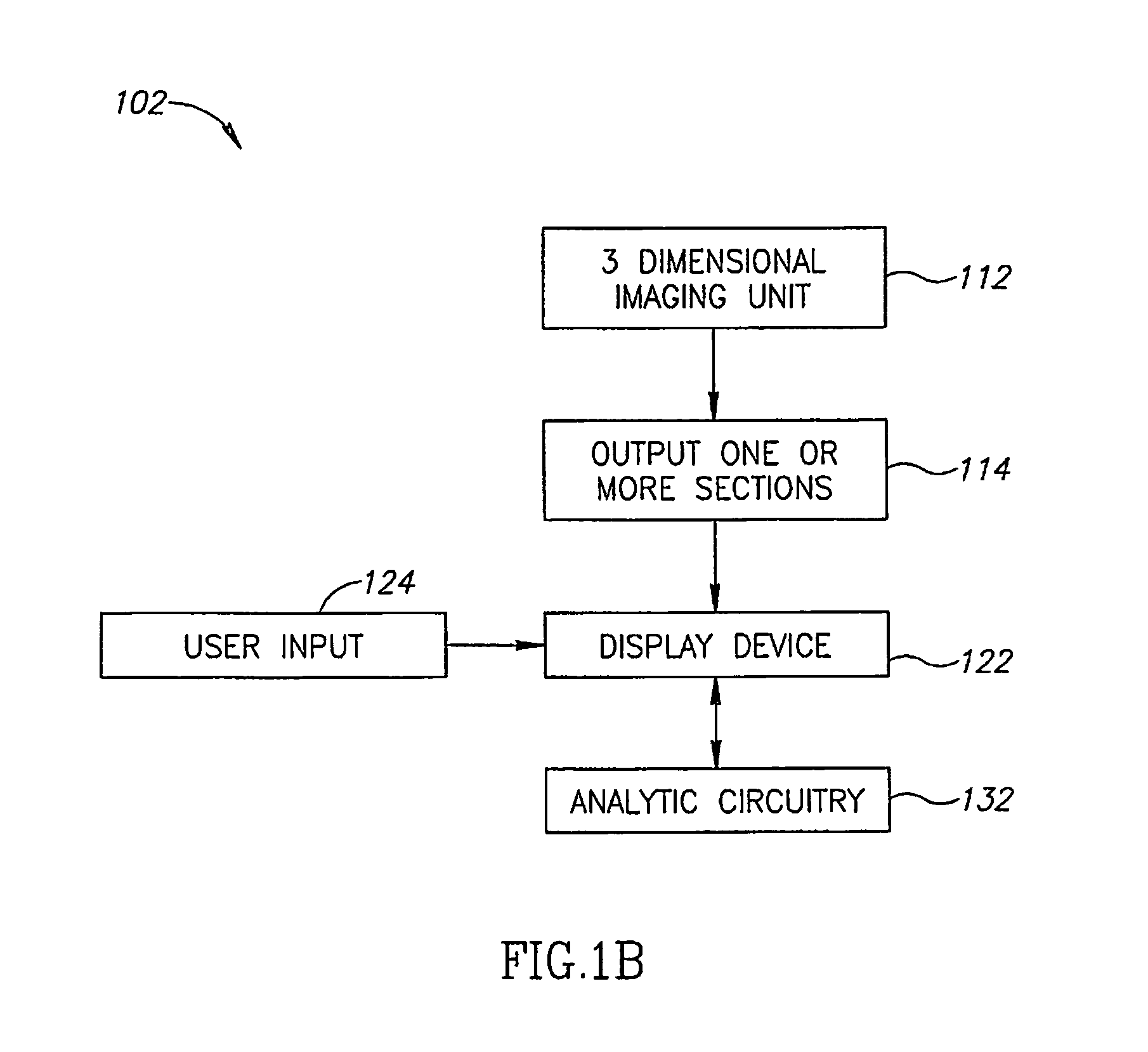Spine labeling
a labeling and spine technology, applied in the field of spine labeling, can solve the problem that it is typically not possible for an untrained observer to accurately identify vertebrae, and achieve the effect of reducing the complexity of the algorithm, reducing the cost of accuracy and/or flexibility
- Summary
- Abstract
- Description
- Claims
- Application Information
AI Technical Summary
Benefits of technology
Problems solved by technology
Method used
Image
Examples
Embodiment Construction
Overview
[0078]FIG. 1A is a simplified flow diagram illustrating an exemplary method 100 of labeling vertebrae in a medical image according to some embodiments of the invention.
[0079]FIG. 1B is a schematic representation of an image analysis system 102 according to some exemplary embodiments of the invention.
[0080]Referring to FIGS. 1A and 1B, use of exemplary image analysis system 102 to perform an exemplary method 100 of labeling vertebrae is described. In general, the system and method attempt to assemble aggregates of pixels into a chain which represents a spine.
[0081]At 110 a spine is imaged using an imaging unit 112. In an exemplary embodiment of the invention, the imaging produces a 3D image. Optionally, imaging unit 112 is a magnetic resonance induction (MRI) unit or computerized tomography (CT) unit.
[0082]Imaging unit 112 provides one or more sections as output 114 which are optionally displayed on a display device 122 and / or presented as serial sections on a tangible media ...
PUM
 Login to View More
Login to View More Abstract
Description
Claims
Application Information
 Login to View More
Login to View More - R&D
- Intellectual Property
- Life Sciences
- Materials
- Tech Scout
- Unparalleled Data Quality
- Higher Quality Content
- 60% Fewer Hallucinations
Browse by: Latest US Patents, China's latest patents, Technical Efficacy Thesaurus, Application Domain, Technology Topic, Popular Technical Reports.
© 2025 PatSnap. All rights reserved.Legal|Privacy policy|Modern Slavery Act Transparency Statement|Sitemap|About US| Contact US: help@patsnap.com



